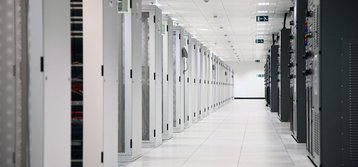Editor's note: This article was written by Richard S. Einhorn and Trish Ray
With millions of square feet of data center space in the US having been put into place since 2000, many of these facilities either have already or will soon be in need of alteration. Retrofits, upgrades, buildouts of shelled space, or expansions to the base building are becoming as important to the development workload as greenfield builds.
Driving this trend are increasing IT densities, new technologies, aging equipment, better airflow management, or unmet capacity requirements for their hosted or enterprise tenants. Even cloud or hyperscale facilities constructed in the last decade or sooner are being renovated and upgraded to address these factors.
Upgrading live data centers or other critical facilities can be very complex and is typically a much more difficult and intricate task, than designing new. Dealing with aged equipment, older design topologies, and, of course, SLA’s for existing tenants (both external and internal) make renovating these occupied facilities a challenge.
Service providers and building owners cannot afford mistakes which put the facility’s live load at risk and potentially hurt their own internal client’s businesses, or their client’s downstream clients, which may be even more important!
There are many critical things to consider when upgrading existing facilities. From a design perspective, these include:
Space considerations for new equipment
- Is there room for the new equipment?
- Is there access to bring in the new equipment and remove the old?
- Can the new equipment be rigged into place?
- Does the new equipment location lend itself for an easy interconnection to the existing system
Phasing of the new installation
- Does the existing system have enough capacity to allow for existing components to be de-energized and new components placed in service?
- How will the new install affect the existing system, and will temporary infrastructure components be required?
- Is there enough utility service to bring new components on-line?
Isolation of existing system
- Are proper isolation devices such as valves, circuit breakers, etc. in place to allow for interconnection of the new system into existing?
- Is a method of procedure required with backout procedure in case of an issue?
- Will any hot connections into existing piping / electrical system be required (these should be avoided as much as possible)?
It is also critical to commission the facility after upgrades have been put into place. The challenge of proper commissioning during upgrades in active facilities requires experience in negotiating the risks to operations versus the benefits of detailed commissioning. An experienced commissioning authority will be able to assist the client with plans to phase in the installation, start-up, and testing the new infrastructure that reduces the risk and allows for proper commissioning.
The commissioning plan must also include the Integration of the upgraded infrastructure with any existing infrastructure to assure proper operation at multiple load levels.
From a commissioning perspective, items to consider include;
- Will temporary systems be required to support the loads of the systems to be replaced?
- How will any temporary equipment be commissioned?
- How do we minimize work on energized electrical and pressurized water systems?
- How do we verify all-new control sequences without disrupting critical operations?
- Can the outdated equipment be safely removed to reduce risk to operations at the end of the project?
Lastly, after design and commissioning is complete on an upgraded or retrofitted facility, it is critical to implement training and updated operational procedures. New infrastructure is only as good as the staff that operates it. The best systems, in the best designs, can sometimes be taken down by human error. To make sure the operational aspects of the upgrades are properly utilized, be sure to ask yourself the following questions:
- Have the Standard Operating Procedures (SOP) been changed to reflect the upgraded systems?
- Have the Emergency Operating Procedures (EOP) been updated to reflect the changes in capacity?
- Have the Maintenance Operating Procedures (MOP) been optimized to take advantage of increased redundancy?
- Have the facility operations documents been altered to take into account the updated capacities and controls?
- Will the existing engineering/operations staff be trained through their attendance and monitoring of the commissioning effort and formal classroom review of the new SOP, EOP, and MOP documents?
In summary, these upgrades will become more and more prevalent over the next five years. A significant number of facilities constructed over the last decade require modernization to drive efficiency and align with technology changes driven by AI, IoT, and other digital advancements. The key to these successful upgrades is alignment between your internal facilities and operations team, with outside operational experts and MEP design teams.
These professionals need to be experienced at working in active facilities to ensure you are factoring in, and mitigating in advance, any potential problems that might occur during an upgrade scenario.
Renovating an operational data center is analogous to performing open-heart surgery, so experience and intimate knowledge of the infrastructure control is crucial to success without unscheduled downtime.


